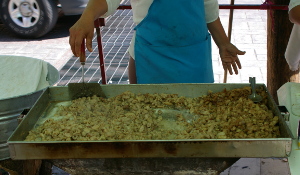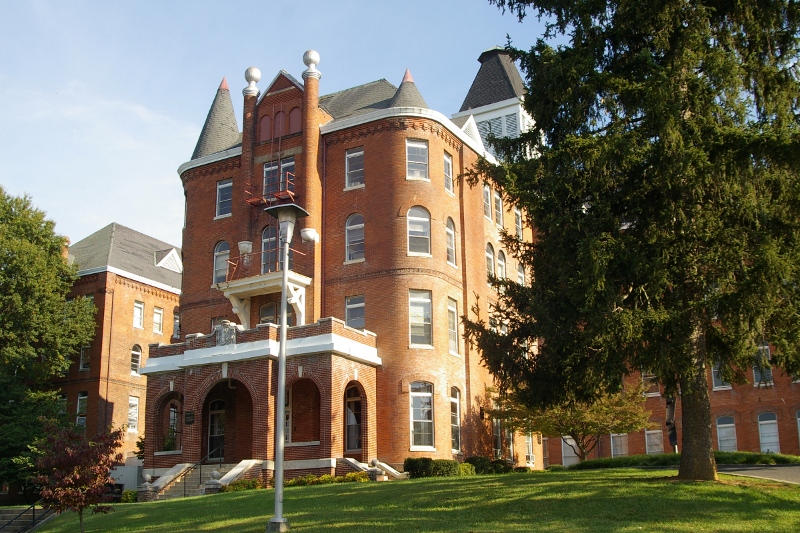Interview with Cuban dissident economist Marta Beatriz Roque
 Marta Beatriz Roque is the founder of the Cuban Institute of Independent Economists, and a prominent Cuban dissident who has been in and out of prison several times.
Marta Beatriz Roque is the founder of the Cuban Institute of Independent Economists, and a prominent Cuban dissident who has been in and out of prison several times.
Robert Broughton: You recently had a visit from a group of Democratic U.S. Senators and Members of Congress: Sen. Patrick Leahy (Vermont), Sen. Sheldon Whitehouse (Rhode Island), Sen. Debbie Stabenow (Michigan), Sen. Dick Durbin (Illinois), Rep. Chris Van Hollen (Maryland 8th), and Rep. Peter Welch (Vermont at-large). What message did you have for them?
Marta Beatriz Roque: I told the Congressmen (Senators and Representatives) that whether I agreed or not [with the Obama announcement on diplomatic recognition], the decision was made, but a retreat from the recent actions of the Obama Administration would be very painful for the Cuban people, so Congress has to be careful on this issue.
RB: One misconception I had about Cuba was that it has a shortage of tourists. Actually, there are a lot of them. And, Havana's better hotels charge $150 to $200 per night, and the all-inclusive resorts charge around $300 per night. Where is all this money going?
MBR: I would be unfair if I said, “into the pockets of Castro”, because I am not aware that this is happening, but I can say that is not used to improve the people's livelihood, which is becoming worse. However, family members of the regime travel like millionaires, as seen with Fidel Castro's son's involvement in expensive golf tournaments and fishing derbies. Most Cubans do not know what golf is, and haven't eaten fish for many years.

 Now that I've lived in Mexico for over two years, here's some culinary discoveries I've made.
Now that I've lived in Mexico for over two years, here's some culinary discoveries I've made. Cerdo (pork): There's something that they do when they cook pork that makes it melt in your mouth. I've heard that they use lard, which can't possibly be good for you. My preferred method of ingestion is in a torta (Mexican sandwich). This yummy picture was taken at the Mercado Hidalgo in Guanajuato.
Cerdo (pork): There's something that they do when they cook pork that makes it melt in your mouth. I've heard that they use lard, which can't possibly be good for you. My preferred method of ingestion is in a torta (Mexican sandwich). This yummy picture was taken at the Mercado Hidalgo in Guanajuato. Pozole verde: Pozole is actually hominy, but what we're talking about here is a soup that includes (usually) chicken, hominy, and some unknown spices, garnished with onions, lettuce, and radishes. It never tastes the same way twice, even when prepared by the same cook. There's also pozole rojo, which I don't like as much, and pozole blanco, which I haven't tried yet.
Pozole verde: Pozole is actually hominy, but what we're talking about here is a soup that includes (usually) chicken, hominy, and some unknown spices, garnished with onions, lettuce, and radishes. It never tastes the same way twice, even when prepared by the same cook. There's also pozole rojo, which I don't like as much, and pozole blanco, which I haven't tried yet. Torta Cubana: Something that you order if you're especially hungry. You could call it a torta with everything on it; chorizo, ham, slices of hot dog, yellow cheese, lettuce, and tomato. Incidentally, I recently spent two weeks in Cuba, and didn't see torta cubana on a menu once. This picture was taken at Tortas Mi Lugar at Positos 11 in Guanajuato.
Torta Cubana: Something that you order if you're especially hungry. You could call it a torta with everything on it; chorizo, ham, slices of hot dog, yellow cheese, lettuce, and tomato. Incidentally, I recently spent two weeks in Cuba, and didn't see torta cubana on a menu once. This picture was taken at Tortas Mi Lugar at Positos 11 in Guanajuato. Tripe: Not something worth writing home about, but it's listed here because there's a funny story that goes with it. The first time I tried it, I saw it being deep-fried by a sidewalk vendor, and my reaction was “umm, calamari; I love calamari.” Well, I learned about three days later that tripe isn't calamari; it's sections of cow intestines. Had I known this, I never would have tried it. Having tried it once, I like it OK. However, you never see tripe on a menu in a restaurant. It's always sold by sidewalk vendors; if you see it cooked before your very eyes, you know that it's cooked sufficiently. This picture was taken at Embajadores Park in Guanajuato.
Tripe: Not something worth writing home about, but it's listed here because there's a funny story that goes with it. The first time I tried it, I saw it being deep-fried by a sidewalk vendor, and my reaction was “umm, calamari; I love calamari.” Well, I learned about three days later that tripe isn't calamari; it's sections of cow intestines. Had I known this, I never would have tried it. Having tried it once, I like it OK. However, you never see tripe on a menu in a restaurant. It's always sold by sidewalk vendors; if you see it cooked before your very eyes, you know that it's cooked sufficiently. This picture was taken at Embajadores Park in Guanajuato.
 Virginia Intermont College in Bristol, VA held its final graduation ceremony on May 4, 2014. The school had been in financial trouble for a while. The beginning of the end came in 2013, when the Southern Association of Colleges and Schools (SACS) terminated the school's accreditation. Although nobody ever confused VI with Harvard, this action was not taken because of academic standards. Instead, the problem was that VI had an unsustainable economic model. What this meant was, most of the school's revenue was coming from student tuition, and not from endowments and donations.
Virginia Intermont College in Bristol, VA held its final graduation ceremony on May 4, 2014. The school had been in financial trouble for a while. The beginning of the end came in 2013, when the Southern Association of Colleges and Schools (SACS) terminated the school's accreditation. Although nobody ever confused VI with Harvard, this action was not taken because of academic standards. Instead, the problem was that VI had an unsustainable economic model. What this meant was, most of the school's revenue was coming from student tuition, and not from endowments and donations. Public courts are rare in Mexico. Mexico has a lot of private clubs, where guests are usually welcome. These clubs don't do much in the way of publicizing their existence, so you'll have to do some asking around.
Public courts are rare in Mexico. Mexico has a lot of private clubs, where guests are usually welcome. These clubs don't do much in the way of publicizing their existence, so you'll have to do some asking around. Daniel Ortega, who holds the office of President of Nicaragua in
defiance of Nicaragua's Constitution, is championing a mega-project;
a canal across the eastern part of Nicaragua that would provide an
alternative to the Panama Canal. The estimated cost is $40 billion.
Daniel Ortega, who holds the office of President of Nicaragua in
defiance of Nicaragua's Constitution, is championing a mega-project;
a canal across the eastern part of Nicaragua that would provide an
alternative to the Panama Canal. The estimated cost is $40 billion.
